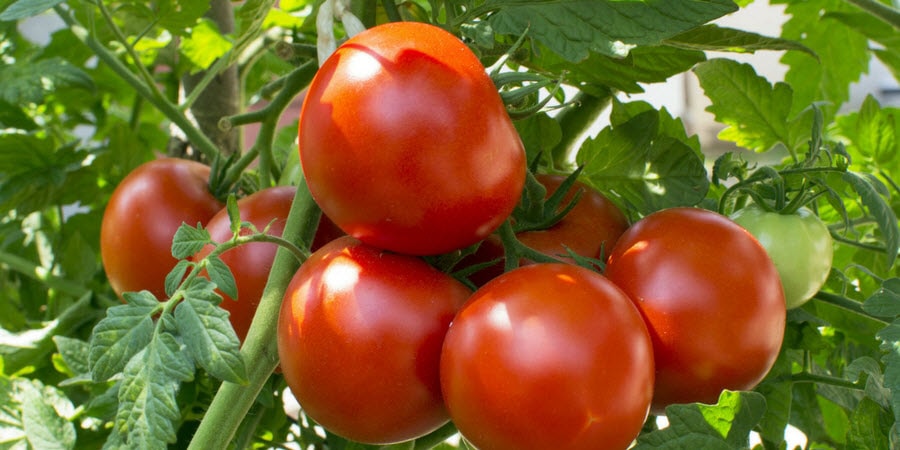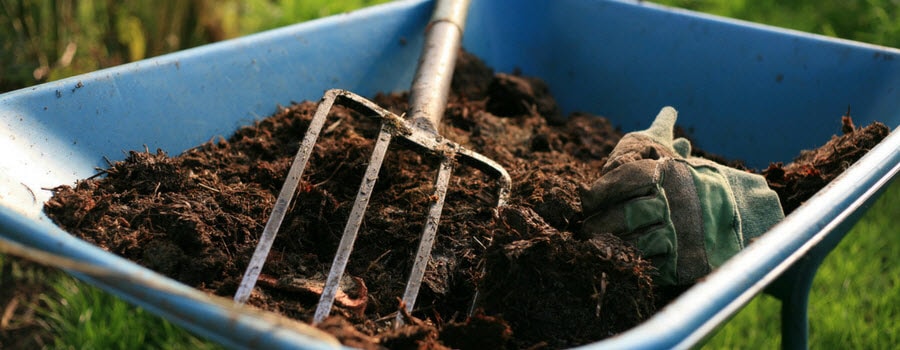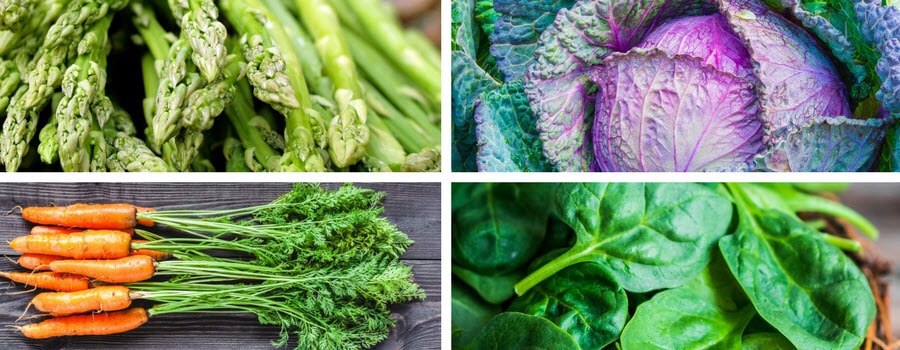Flavorful Vegetables In 5 Steps
- horticulturist and gardening expertApril 7, 2018
Nothing beats the flavor of a fresh-from-the-garden tomato; warmed by the sun, plucked right from the plant and eaten in the garden. Don’t let a lack of time, space or energy prevent you from growing and enjoying a few or bushels full of homegrown vegetables. Get the whole family involved in planning the garden. Be sure to include family favorites, new and different vegetables everyone wants to try and those plants that provide big value for your time, space and energy invested. Tomatoes and asparagus are good examples. One tomato plant produces lots of fruit and a small patch of asparagus can quickly return your investment with big savings on the grocery bill.

Look for creative ways to include vegetables in your landscape. Many gardeners have and more will continue to grow food in containers or mixed in with their flowers, shrubs and other ornamental plantings. One of my favorite combinations is ornamental corn, eggplant, tri-color sage, purple ruffle basil and trailing verbena. For a quick burst of spring beauty and produce I use Swiss chard as a vertical accent, add a few pansies (they are edible), colorful leaf lettuce or ornamental mustard and a trailing ivy or two for aesthetics, not eating. And don’t let the thought of growing your own vegetables intimidate you. Instead, follow these 5 simple steps for a successful vegetable garden.
1) Get Your Garden off to a Good Start
- In the garden, prepare the soil before planting. Add several inches of compost, peat moss or other organic matter to the top 6 to 12 inches of soil. This improves drainage in heavy soils and increases water-holding capacity for sandy or rocky soils.
- Use a quality potting mix when growing in containers. It should have good drainage and retain moisture.
- Add Milorganite®, a slow release fertilizer, to the soil in your garden or potting mix in your containers. This goof-proof slow-release source of nitrogen meets the EPA Exceptional Quality standards and will help encourage plant growth without interfering with flowering and fruiting.

2) Match your Veggies to the Light - Limited Sunlight - No worries
- Full sun will give you the best results, but you can still grow edibles where sunshine is limited.
- Grow tomatoes, peppers, eggplants, cucumbers, and other vegetables that you eat the flowers or fruit. They produce their best and have fewest disease problems when grown in eight to twelve hours of sunlight.
- Root crops such as beets, radishes, and carrots can get by with about a half of day of direct sun.
- Fill shady spots with leafy crops like lettuce and spinach. They grow great in full sun, but can still produce in a shady location with only 4 hours of sunlight.
3) Let the Weather, NOT the Calendar, be your Planting Guide
- Plant vegetables when the air and soil are the right temperature for the vegetables you are growing. And be prepared to protect new plantings from unexpected frosts.
- Start and end your season with lettuce, peas, broccoli and other cool season crops that can tolerate cool air and soil. And don’t worry about a light frost at the end of the season. Many of these like Collard greens, Kale and Brussels sprouts taste better after a bit of a chill.
- Wait for the danger of frost to pass and the soil and air to warm before planting tomatoes, peppers, squash, melons and other warm season crops.
- Jump start the season with the help of floating row covers. These polypropylene fabrics let air, light and water through while trapping the heat near the plants. The best part is you won’t need a hammer, nail or other tools. Simply lay the fabric over your planting, leaving enough slack for the plants to grow and anchor the edges to the ground with stones, boards or other items.

4) Maximize Your Efforts
- Check the seed packets and plant tags for details on when and how to plant each herb and vegetable seed or transplant. Increase productivity with some simple planting and training strategies.
- Try succession plantings. Simply start with lettuce, radishes or another cool weather plant. Once harvested, replant the area with onions or beans. After these are done you can replant the area once again with a fall crop of lettuce, spinach or radishes.
- Double your harvest with interplanting. Plant quick-to-mature crops like radishes and lettuce, in between longer maturing plantings of cabbage, tomatoes or eggplant. The short season vegetables will be ready to harvest just about the time the bigger plants are crowding them out.
- Consider planting vegetables closer together in wider rows. You’ll waste less space for pathways, putting more room in plantings. Make sure each plant has enough space to grow to maturity and that you can reach all planted areas to weed and harvest.
5) Just a Bit More Care Needed
- Once planted keep your plants growing and healthy with some basic care.
- Water new plantings thoroughly and often enough to keep the soil moist, but not too wet.
- Add a layer of shredded leaves, evergreen needles or other organic material to conserve moisture, suppress weeds and moderate soil temperatures.
- Midsummer give your plants a nutrient boost with Milorganite, a slow-release nitrogen fertilizer. It won’t burn your plants even when the weather turns hot and dry.
- Pull weeds as they appear, watch for bugs and disease and use the most eco-friendly control options.
Now, wait for the produce to come pouring in. You may find this is a great family activity that gets even the most reluctant vegetable eaters munching on a few fresh carrots and maybe even broccoli!

